The German 88 mm Flak gun as the best anti-tank gun of World War II.
History, development, service, specifications, statistics and pictures.
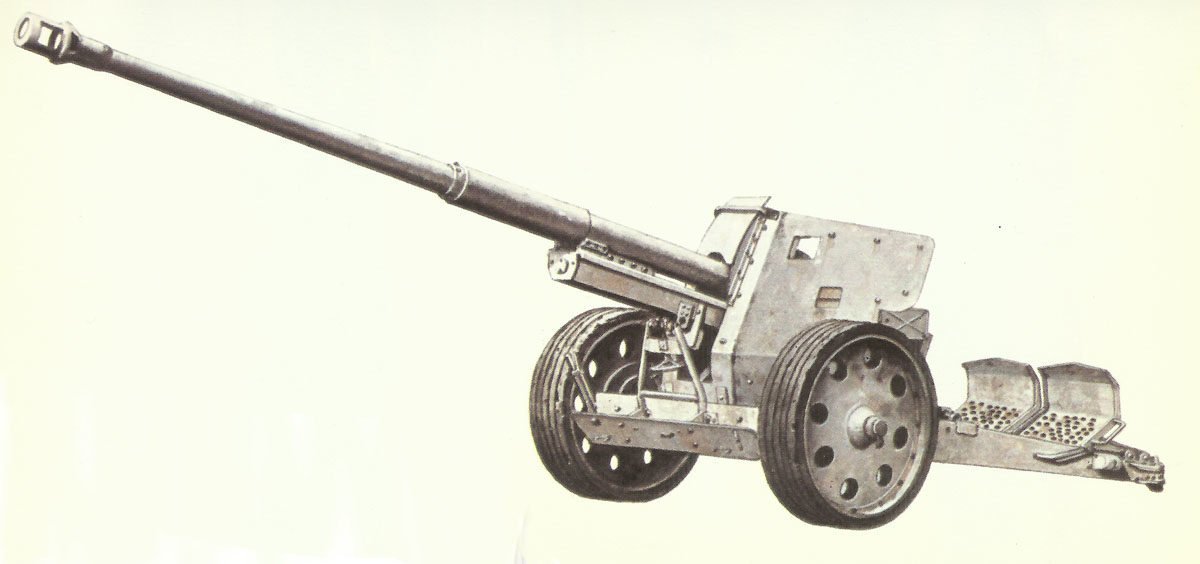

88 mm Flak as anti-tank gun
Table of Contents
After the Krupp company received a contract to build the 88 mm Flak, shortly before the outbreak of World War II, it also began designing an 88 mm Pak (anti-tank gun). This gun, which went into production in 1943, became the best anti-tank gun of the war.
The changes from the previous, more common gun also included a semi-automatic vertical breech mechanism. Opening the breech and ejecting the empty cartridge was done by two springs, which were compressed when the barrel was thrown back. This shortened the reloading time considerably.
The traversing aiming device could be rotated up to 360° degrees. The cross mount was the same as the 88 mm anti-aircraft gun. Shells could also be fired when the gun was still standing on the gun carriage with wheels, firing being electric.
Since the elevation of the barrel was limited to 40° degrees, the upper part of the shield could be limited to only 68in (1.73 meters) height. The weight of 8,057lb (3,650 kg) in the firing position was also low for such a gun.
The finally built anti-tank gun was the Pak 43, which was based extensively on the original anti-aircraft gun and had a similar mobile bedding, but with stronger ballistics and – since the required elevation did not exceed 20° – a lower and easier to camouflage silhouette.
The gun production soon overtook the gun carriage production (no unusual situation), and so the first guns were fitted on a two-wheeled gun carriage, which was composed of a selection of individual parts that were just available: the wheels of the 15 cm howitzer, the gun carriages of the 10.5 cm cannon, etc., and they were delivered as quickly as possible to the Eastern Front for action. Plump and unwieldy as they were – nicknamed ‘Scheunentor’ (barn gate) – they were nevertheless effective and proved their worth until the actual Pak 43 was available.
Therefore, the 88 mm anti-tank gun was available in two types:
88-mm Pak 43 L71 caliber length 6.35 meters (20.8ft) on cross mount with long range and penetration, but only limited mobility offside from the road.
88-mm Pak 43/41 L/71 caliber length 6.36 meters (20.9ft, the ‘barn gate’) on spreader carriage, also with large range and penetration power, but high weight and only 56° degree horizontal traverse field of fire.
Both guns fired armor-piercing ammunition and high-explosive shells. The firing speed of both guns was between 6 and 10 rounds per minute and up to 190 mm of armor could be penetrated at 1,094 yards (1,000 meters).
The gun was used by the army anti-tank units – in contrast to the 88 mm Flak, which was mostly operated by Luftwaffe personnel.
At a conference about the production and deployment of German anti-tank guns in 1943, a captain reported that he had knocked out six T-34 tanks with a Pak 43/41 ‘Scheunentor’ (barn gate) within a very short time over a distance of 3,500 meters (3,825 yards).
In another report it was mentioned that the engine block of a T-34, which was hit from behind from a distance of 600 meters (650 yards), had flown five meters (5.5 yards) away.
On October 1, 1944 there were 578 88-mm Pak 43s in the Wehrmacht and on January 1, 1945 the numbers reached 829 guns.
In October 1944, 1,100 7.5-cm Pak 40 and 88-mm-Pak 43 were delivered to front units or the reserve army, while 16 were captured by the Allies. In November 1944, 880 units were delivered and 40 were captured by Allied troops. For December the figures were 908 delivered and 50 captured Pak 40 or 43.
The Legend of the Eight-Eight as an Anti-Tank Gun
Reports after the war often say that the 88 mm guns were such successful and effective anti-tank guns because the Germans were lucky enough to have numerous eight-eight anti-aircraft guns at their disposal, while the Allies had nothing comparable to use them on the battlefield.
In fact, in June 1941, when Operation Barbarossa began, the Wehrmacht had 4,630 88 mm and 105 mm Flak guns, of which about 3,820 were used in front line units.
On July 4, 1941, 616 of the 88 mm Flak 18 and 36 were on the Eastern Front, most of them in 41 motorized mixed Air Force anti-aircraft Battalions and 10 Army motorized anti-aircraft Battalions.
Since these guns were the only ones in the entire Wehrmacht arsenal that could destroy the Russian T-34 and KV tanks at distances over 1,000 meters (1,100 yards), they were of great importance during the second half of 1941.
However, the British, American and Soviet armed forces also had excellent anti-aircraft guns in the same caliber range, at least since 1940, which achieved similar or even better performances than the German 88 mm gun.
The Russian 85-mm M1939 was comparable to the German eight-eight, while the British 3.7-inch Mk I and the American 90-mm M1 were even superior.
All these allied anti-aircraft guns were produced in large numbers and many thousands were available after 1940. For example, the Red Army had received 3,329 85 mm anti-aircraft guns by June 1941.
The only question is why none of these allied weapons achieved the same reputation as the German eight-eight ?
There’s only two reasons for that. First, the design of the 88-mm anti-aircraft gun on the excellent chassis bedding was very light and mobile, and the gun was able to engage targets up to 0° degrees.
However, this would not have been an obstacle for the allied anti-aircraft guns, as such a chassis could have been designed quite quickly.
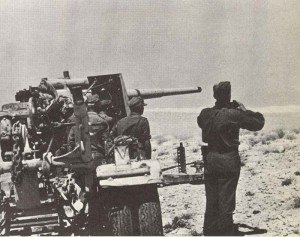
The main reason was that the Wehrmacht – and to a lesser extent also the Red Army – had recognized that anti-aircraft guns were also potentially powerful weapons for ground combat. Because anti-aircraft guns had a high projectile velocity, high firing speed and an excellent optical aiming equipment.
They had to be mobile in order to follow the troops and to protect them in the field against air attacks. And in the end they had to be able to fire very quickly, to detect and fight their target.
During Operation Battleaxe in North Africa in June 1941, the I./Flak Regiment 33 destroyed 82 of the 92 British tanks knocked-out with a TOE strength of twelve 88 mm Flak.
By the end of 1941, Rommel’s two Luftwaffe Flak battalions with a TOE strength of 24 eight-eight guns, destroyed 264 tanks and 42 aircraft.
At the same time, the British had at least three times as many 3.7-inch anti-aircraft guns as the Germans had at Eight-ight guns. But surprisingly, no German or Italian tank crew had ever seen one of them when it fired at them.
128 mm Pak 44
In 1945, during the last weeks of the Second World War, an even bigger monster of anti-tank guns came to the front. This was the 128-mm Pak 44, which fired a 62.25lb (28.2 kg) shell with twice the power of the 88-mm Pak 43.
The Pak 44 had been developed with the knowledge that an enemy tank is best taken out when it is as far away as possible. The gun was probably one of the best of its kind, but by the end of the war only a few could reach the front.
Even before the Pak 43 became operational, it became clear that something heavier would soon be needed. The German Wehrmacht was impressed by the Russian 12.2 cm guns and asked both Krupp and Rheinmetall to build an anti-tank gun of similar caliber. Both companies adopted the caliber of 12.8 cm and produced very similar prototypes.
In the prototypes of both companies, the transport mounts were very similar to those used for the Pak 43. The Krupp gun was moved on two two-wheeled percentage carriage – one at each end.
The Rheinmetall-Borsig gun had six wheels, four on a bogie on one side and two on a detachable carriage on the other. When the gun went into firing position, the carriage was uncoupled with the two wheels while the four-wheeled bogie was lifted, but remained connected to the gun carriage to gain extra weight to absorb the recoil during firing.
These Pak 44s had a low silhouette on cross mountings and promised to become strong weapons, but they came too late. When the two designs were ready for action, the war was in its final phase and no more than a handful were completed.
51 guns were made. As usual, the tube and breech production of the gun had run away from the mounting production, and so, as an emergency solution and to obtain fire testing figures, a number of tubes were placed on various gun mounts, especially on the ex-Russian 15.2 cm and ex-French 15.5 cm gun mountings. Due to the difficulty of adapting the recoil brake systems to the new and powerful guns, these adaptations were not particularly successful.
A further 77 guns were produced in a slightly modified form for the heavy Jagdtiger tank destroyer.
Even though the 12.8-cm Pak 44 was a very effective weapon, the fact remained that it weighed about 10 tons and was over 9.8 yards (9 meters) long. The armor-piercing projectile of 62lb (28 kg) could penetrate a 230 mm thick armor-plate at a distance of 1,100 yards (1,000 meters).
User: Germany.
Specifications 88 mm Pak 43
Specification:
| 88 mm Pak 43/41 | specification |
|---|---|
| Type | heavy anti-tank gun |
| Crew | 7-10 (figure for Flak 18,36,37) |
| Length | 30 ft 9.6 in (9.20m); Pak 43/41 29 ft 10.8in (9.114m) |
| Width | 8 ft 3.5 in (2.527m) for Pak 43/41 |
| Height | 5 ft 6.9 in (1.70m); Pak 43/41 6 ft 6 in (1.981m) |
| Weight | firing: 7,947lb (3,600kg); Pak 43/41 9,603lb (4,350kg) |
| Calibre | 88 mm (3.465 in) |
| Length of barrel | 20 ft 10 in (6.35m); Pak 43/41 20 ft 10.4 in |
| Traverse | 360° (on cross mount); Pak 43/41 56° |
| Elevation | -8° to +40°; Pak 43/41 -5° to +38° |
| Muzzle velocity | anti-tank shell 3.280 ft/sec (1,000 m/sec); APCR 3,707 ft/sec (1,130 m/sec); High-explosive 2,641 ft/sec (805 m/sec) |
| Firing range | 26,250 ft (17,500m) as field gun |
| Shell weight | anti-tank 22.9 lb (10.37kg); APCR 16 lb (7.25kg); High-explosive 20.3 lb (9.2kg) |
| Practical rate of fire | 6-10 rounds/min |
Penetration mm at 30° armour plates:
| Range | anti-tank shell | APCR |
|---|---|---|
| 100 meters | 203 mm | 237 mm |
| 500 meters | 185 mm | 217 mm |
| 1,000 meters | 167 mm | 192 mm |
| !,500 meters | 148 mm | 171 mm |
| 2,000 meters | 139 mm | 136 mm |
Note: tanks were engaged at distances of up to 3,825 yards (3,500 meters).
Production:
| 88 mm Pak 43 | figures |
|---|---|
| Production | 1943-1945 |
| Price per unit | Reichsmark 26,000 = c.$5,780 = c.£1,450 |
| Total production figure (all 88 mm guns) | more than 12,000 |
Video Pak 43
Test shooting of the US Army with a Pak 43 captured in France in 1944.
References and literature
Die Geschichte der Artillerie (John Batchelor, Ian Hogg)
Artillery in Colour 1920-1963 (Ian Hogg)
German Anti-Tank Guns 1935-1945 (Werner Haupt)
The Encyclopedia of Weapons of World War II (Chris Bishop)
Operation Barbarossa: the Complete Organisational and Statistical Analysis, and Military Simulation, Volume I – IIIB (Nigel Askey)




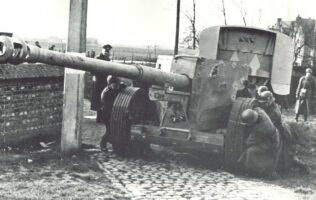
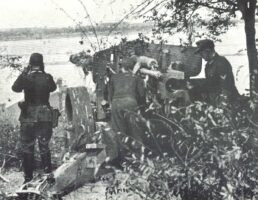
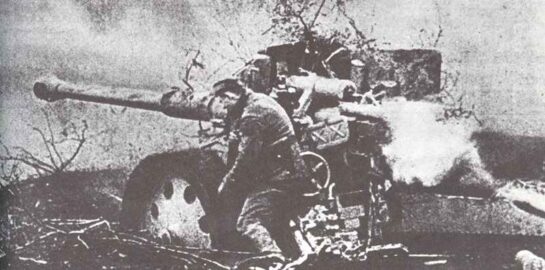
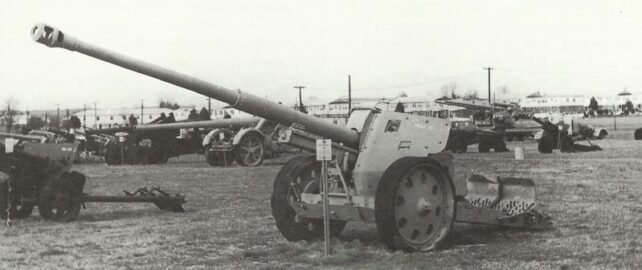
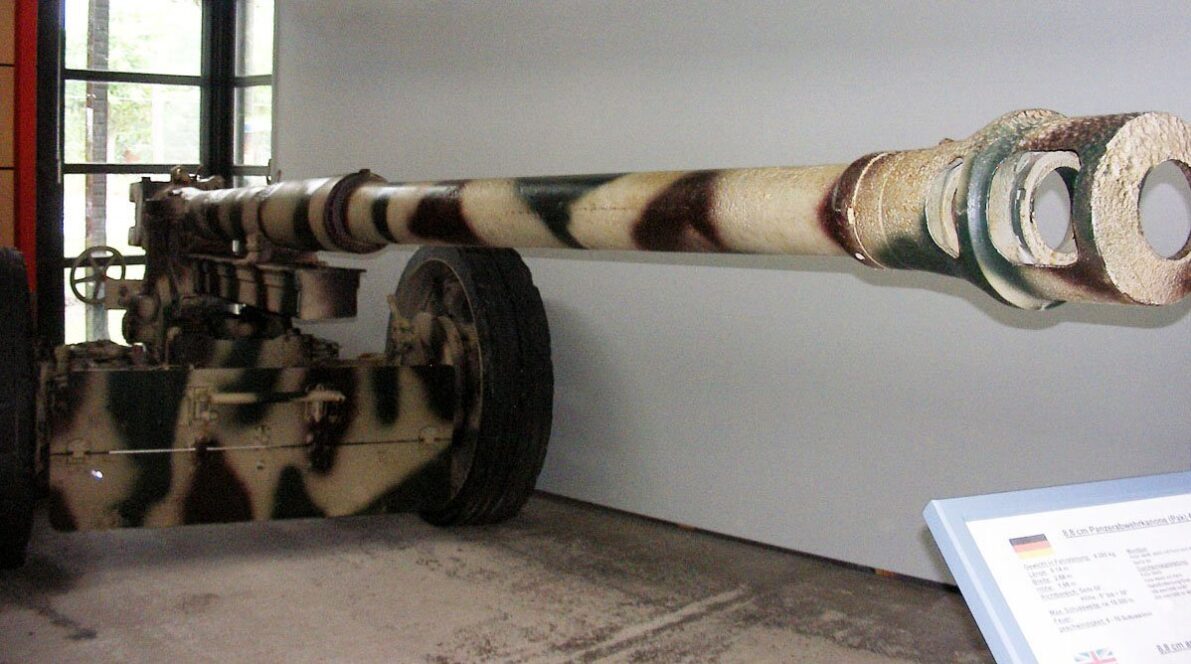
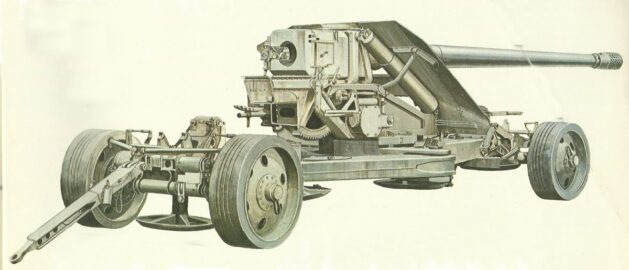
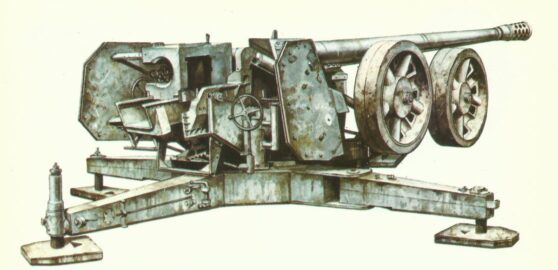
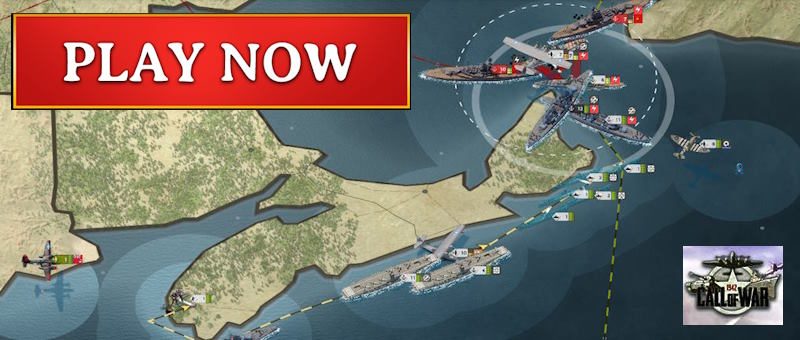
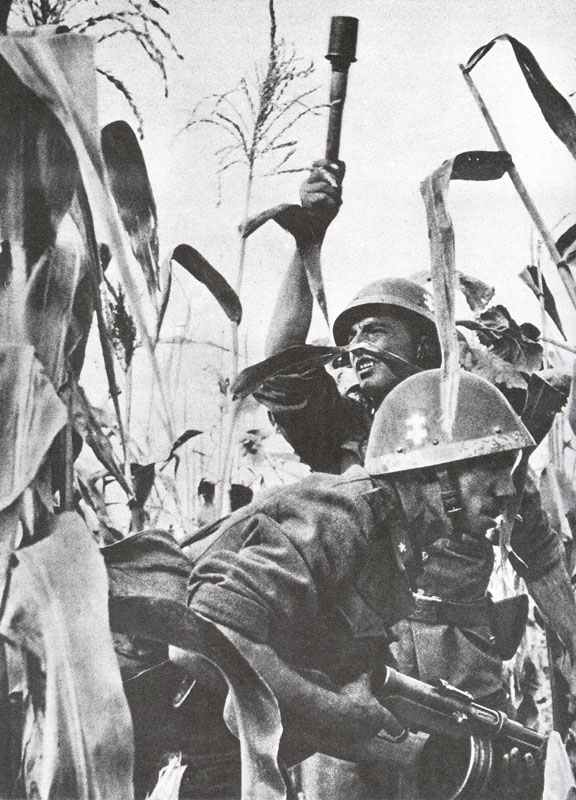
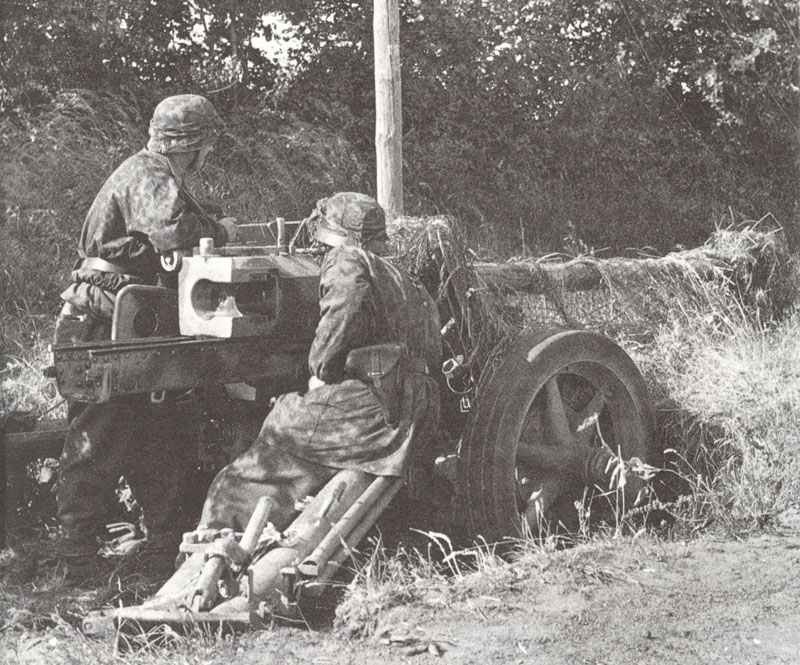
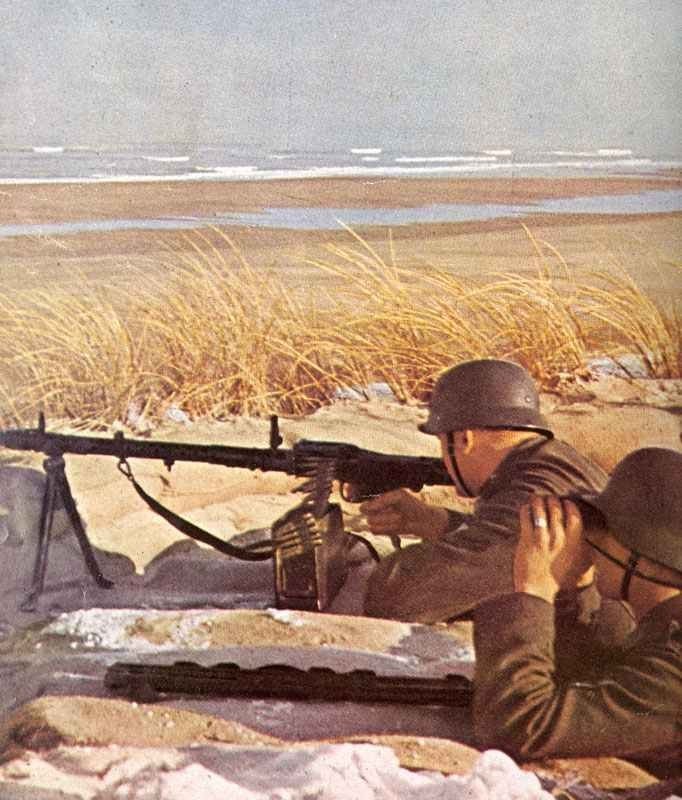
If you read enough history, especially first person accounts, you will start to see a kind of group think that has emerged over the last seventy years with regard to WWII. In the last decade research into memory imprinting, memory appropriation, and the affects of stress and PTSD on memory has been carried out and the picture is that our memories are very malleable and we tend to fill in details with facts we learn much later, and even appropriate other people’s memories to fill in our blanks.
We all know that in combat, the soldier really doesn’t know much more than what he sees around him and the effects of stress can make even that difficult for him to recall in any kind of clarity. The recent Judge Kavanaugh carnival show is a perfect example of that effect. A woman who was drunk and probably on drugs too, was accosted by a man, but was so out of it she couldn’t recall where it happened, exactly when, and who she was with, but yet she had crystal clear recall 35 years later that it was a particular man. Right.
Okay, so you read historical accounts of combat or read first person accounts and in Europe, EVERY SOLDIER in the US Army was under fire by German 88mm guns. Now, the best source of propaganda in the ETO for the Germans was the Stars and Stripes Newspaper. They trumpeted things about the German “Super” Weapons like the 88mm. So after being under artillery fire and reading in the Stars and Stripes how “bad” the 88mm was every GI assumed it HAD to be an 88mm shooting at them because were they not the most effective and terrifying? So of course they had to be that right?
Let’s look at numbers. The 88mm AA was a division or Corps level weapon and around twelve were allocated. Rommel used them in the desert to stop armor breakthroughs and that is where they got their reputation. In Europe, not so much. The average German Division had around 36 artillery tubes of 75mm and 105mm caliber. So the numbers tell the story, The GI was a lot more likely to have come under fire from 105mm howitzers or 75mm field guns or even 150mm guns that he was the 88mm. The 88mm was a flat firing gun and would not be too good for work in hilly terrain. Of course it’s air burst ability would be of use, but a tree burst by a 105mm or 75mm would have had the same effect. So every time you read about someone being under 88mm fire take it with a grain of salt.
Along those same lines in a lot of accounts every German Tank was a Tiger too. A PZ Mk IV with the long 75mm looked a lot like a Tiger I down to the muzzle break if you were lying in a fox hole and one was shooting at you.
Knowing what we do now about our memories it is a fact that every time you remember something or discuss it, you modify the memory, add facts and fill in things. Some studies of twins even show that we will put ourselves in the memories so that we are the heroes or at least a role that is better than what actually happened. The corroborated this by having the twins tell the same story, then having the parents verify what actually happened. Some of the twins actually traded places in their memories so that THEY were not the one performing the bad behavior.
So now imagine all these old Veterans at their reunions, trading stories with not so good memories…they will come away with a homogenized version cobbled together from all the facts they hear about events they may or may not even witnessed. They plug those into their recollections and pretty soon you have a group consensus of what actually happened. I have read accounts where the Vets got the technical facts wrong. One Vet in a book written by an uncritical Author maintained that the Germans had a great advantage over the Americans because they had Smokeless Powder and the Americans didn’t. Now he’d have been right if he was fighting in Cuba in 1898. But not in Europe in 1944 and 1945. The US had smokeless powder in 1918. This kind of crap gets published because authors don’t want to counter or correct the obvious and egregiously wrong recollections of Veterans. This is how myths take hold and become fact.
You might also take into account WHEN a book was written. I have read numerous accounts of battles about the same action written by different men in units in the same regiment. For instance 35 years or so after WWII Eugene Sledge wrote “With the Old Breed” about the 1st Marine Division on Peleliu and Okinawa. Later comrades of his wrote books on the same battles over fifty years later. Do you think they relied on his book to fill in gaps in their memories of exactly what happened…you bet they did. BTW his book and one other were used for the TV mini Series The Pacific. The show did not do them justice. It was almost unwatchable if you had read the books.
As with most things, history is subject to the Latin warning: Legit Cave, or reader beware.